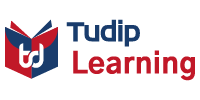In today’s digital landscape, data analytics plays a critical role in transforming raw data into actionable insights. Organizations rely on data-driven decision-making to optimize operations, enhance customer experiences, and gain a competitive edge.
At Tudip Technologies, the focus is on leveraging advanced data analytics techniques and tools to uncover valuable patterns, correlations, and trends. This blog explores the fundamentals of data analytics, key methodologies, industry applications, challenges, and emerging trends shaping the future of analytics.
What is Data Analytics?
Data analytics is the process of collecting, processing, and analyzing datasets to extract meaningful insights. It includes various approaches, ranging from understanding past events to predicting future trends and recommending actions for business optimization.
Types of Data Analytics:
- Descriptive Analytics – Summarizes historical data to reveal trends and patterns
- Diagnostic Analytics – Investigates past data to understand why specific events occurred
- Predictive Analytics – Uses statistical models and machine learning to forecast future outcomes
- Prescriptive Analytics – Provides data-driven recommendations to optimize business decisions
Key Techniques & Tools in Data Analytics
Essential Data Analytics Techniques:
- Data Cleaning & Preprocessing – Ensuring accuracy, consistency, and completeness in datasets
- Exploratory Data Analysis (EDA) – Identifying trends, anomalies, and relationships in data
- Statistical Modeling – Applying probability and regression analysis to uncover hidden patterns
- Machine Learning Algorithms – Implementing classification, clustering, and deep learning models for predictive insights
Popular Data Analytics Tools:
- Python – Extensive libraries like Pandas, NumPy, and Matplotlib for data manipulation and visualization.
- R – A statistical computing powerhouse for in-depth data modeling and analysis.
- SQL – Essential for querying and managing structured datasets in databases.
- Tableau & Power BI – Creating interactive dashboards for data visualization and reporting.
- Apache Spark – Handling big data processing and real-time analytics.
At Tudip Technologies, data engineers and analysts utilize scalable data solutions to help businesses extract insights, optimize processes, and drive innovation using these powerful tools.
Applications of Data Analytics Across Industries
- Business Intelligence – Understanding customer behavior, market trends, and operational efficiency.
- Healthcare – Predicting patient outcomes, optimizing treatments, and managing hospital resources.
- Finance – Detecting fraud, assessing risks, and enhancing financial forecasting.
- E-commerce – Personalizing marketing campaigns and improving customer experiences.
- Manufacturing – Enhancing supply chain efficiency and predicting maintenance needs for machinery.
By integrating data analytics into various industries, organizations can make informed, data-driven decisions that lead to increased efficiency and profitability.
Challenges in Data Analytics
- Data Quality – Ensuring clean, reliable, and structured datasets for accurate insights.
- Privacy & Security – Complying with data protection regulations to safeguard sensitive information.
- Skill Gap – The demand for skilled data analysts and scientists continues to rise, requiring continuous learning and upskilling.
With expertise in data engineering and analytics, Tudip Technologies addresses these challenges by employing best practices in data governance, security, and automation.
Future Trends in Data Analytics
- Augmented Analytics – AI-driven automation for faster and more accurate data insights.
- Data Democratization – Making analytics accessible to non-technical users via intuitive dashboards.
- Real-Time Analytics – Enabling instant data processing for quicker decision-making.
As organizations continue to evolve in the data-centric era, leveraging the latest analytics techniques and technologies will be key to maintaining a competitive advantage.



